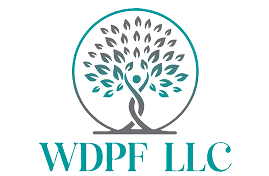If you’re planning to build a new home or expand an existing one, you’ve probably asked yourself, how do construction loans work? It’s quite a common question, and a good one. Construction financing doesn’t follow the same model as a regular mortgage, and instead, the details can catch people off guard if they go in without a clear understanding. Over the years, WDPF had many clients, especially those seeking construction loans in Wisconsin, ask us about the steps, the timeline, and how the money is actually disbursed.
In this blog, we will give a practical breakdown based on what we’ve learned from real customers, common lender expectations, and a few mistakes to avoid.
What Is a Construction Loan?
Let’s start with the basics. A construction loan is a short-term, interest-only loan used to finance the building of a residential or commercial property. Unlike traditional mortgages that provide a lump sum, construction loans work in phases. The funds are released in parts, usually tied to specific stages of construction. This is often referred to as a “draw schedule.”
We’ve seen people expect to get a big check upfront, but lenders generally release funds only after verifying that a specific portion of the work is completed. This protects both the borrower and the lender.
Who Typically Uses Construction Loans?
Homeowners building custom homes, real estate developers working on multi-family units, and even small business owners constructing office buildings all apply for this type of loan. In Wisconsin, it’s often local families looking to build their “forever home” on a plot of land outside the city. In fact, one couple we worked with outside Madison used a construction loan to build a farmhouse-style property on inherited land, something they couldn’t have done with a regular mortgage.
How the Loan Is Structured
Construction loans are usually structured to last around 12 months, just enough time for the project to reach completion. During this time, you’ll make interest-only payments based on the amount drawn. Once the construction is complete, the loan is typically converted into a standard mortgage (this is known as a construction-to-permanent loan) or paid off entirely if you’re refinancing or selling.
One thing we’ve learned working with a variety of clients is that timing really matters. If delays happen, due to weather, permits, or supply chain issues, you’ll need to talk to your lender about extending the draw schedule or interest period.
Key Steps in Getting a Construction Loan
- Get Prequalified: Start by determining how much you can borrow. Many construction loan providers in Wisconsin will ask for detailed financials, a proposed budget, and even a credit check before issuing a prequalification.
- Create a Detailed Plan: Lenders want to see architectural plans, a building timeline, a breakdown of costs, and the contractor’s credentials. We’ve seen applications delayed simply because homeowners didn’t include the builder’s insurance or license upfront.
- Apply for the Loan: Once you have everything in place, submit your application. The underwriting process can take a bit longer than with standard mortgages due to the extra documentation required.
- Begin the Draw Process: As the work progresses, your builder will request draws. An inspector (hired by the lender) usually verifies that each stage is complete before funds are released.
Common Challenges and How to Avoid Them
One of the most common issues we’ve seen is underestimating the total project cost. Materials fluctuate in price, and unexpected site issues (like poor soil quality) can lead to added expenses. Always include a contingency of at least 10% in your budget.
Another mistake? Not vetting your builder thoroughly. Lenders won’t release funds unless your builder meets their requirements. A client in Milwaukee once had to start over with a new contractor midway through the process, which added months to their timeline and additional costs they hadn’t planned for.
Construction Loans in Wisconsin: What’s Unique?
Wisconsin has its own quirks when it comes to financing new builds. Zoning laws and weather conditions can both affect your timeline and budget. Several construction loan providers in Wisconsin offer locally focused advice and are familiar with regional regulations and land values.
It’s also worth noting that rural land loans often have stricter requirements, and lenders may want to see that utilities (like water and electricity) are available or planned for.
Conclusion
Construction loans are a useful tool but they’re also a responsibility. Understanding how they work, staying organized, and communicating frequently with both your builder and lender can make a big difference. Based on our experience, those who plan thoroughly, leave room in their budget, and stay realistic about timelines generally have a smoother experience.
If you’re seriously considering building a home and need help understanding your options, don’t hesitate to speak to a lender or financial advisor early. It’s better to go in with a solid plan than to course-correct halfway through construction.


